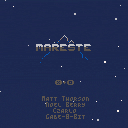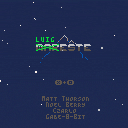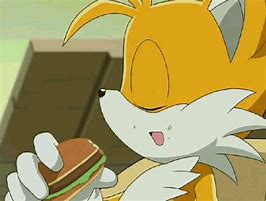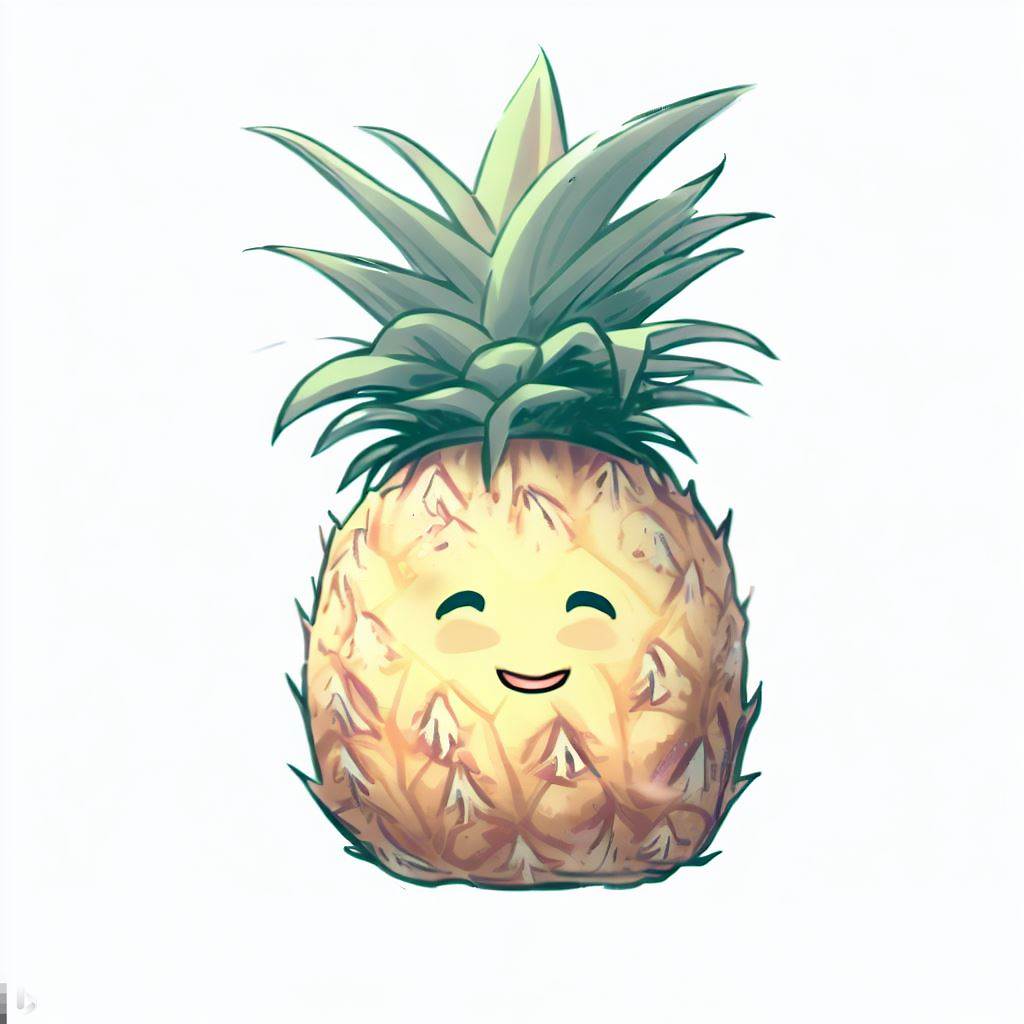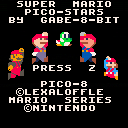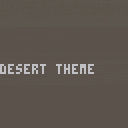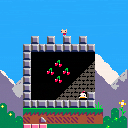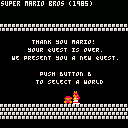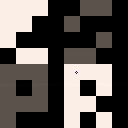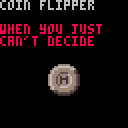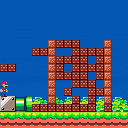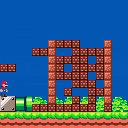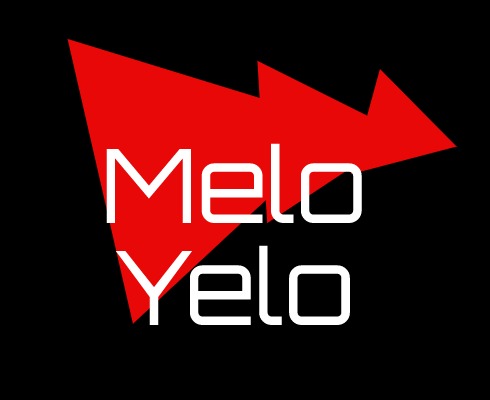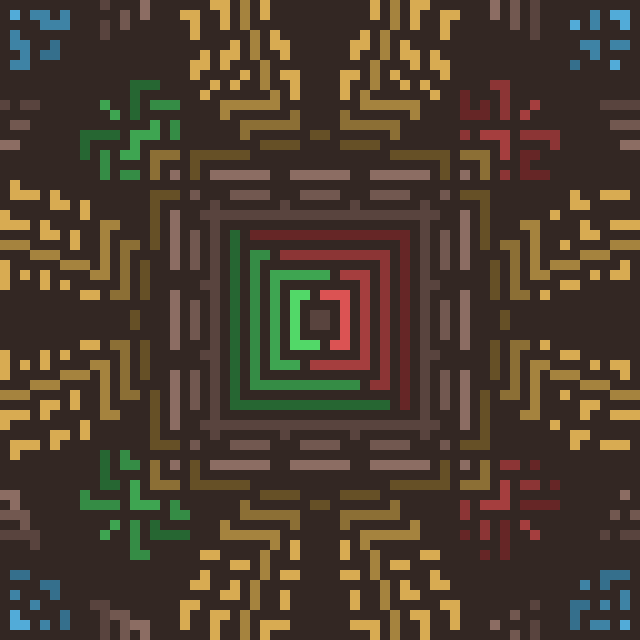I made the startup sequence that the GameBoy Color uses except in PICO-8.
GameBoy Startup
@Czarlo made the GameBoy Startup, you can check it out here!
A simple collection of some PICO-8 Mario games.
Original games:
Super Mario Bros Authentic: https://www.lexaloffle.com/bbs/?tid=31744
Super Mario Bros 0.2: https://www.lexaloffle.com/bbs/?tid=28942
Super Mario Remix: https://www.lexaloffle.com/bbs/?tid=39432
Yoshi in Celeste 2: https://www.lexaloffle.com/bbs/?pid=yoshiceleste2-0
Arcade Mario Bros: https://www.lexaloffle.com/bbs/?pid=arcademariobros_02-1

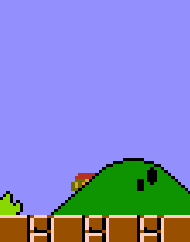
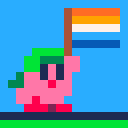



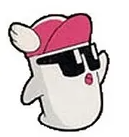
I found that, when entering the editors, the map resets itself and, furthermore, resets the map for the game being currently played as well.
An example of this bug (using Super Mario Remix):
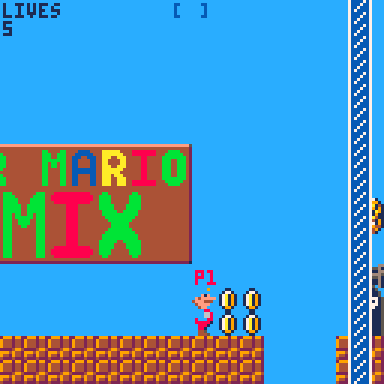
@zep can you please fix this or make this a setting or something? (I would prefer it being a setting available using config)



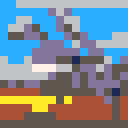
I was fiddling around with the printable sfx when I discovered the f character affected the sound playing, so I decided to make this list:
-- Filters --
n: Noise filter (Noiz)
b: Buzz
d1: Detune 1
d2: Detune 2
r1: Reverb 1
r2: Reverb 2
-- Characters --
1: n
2: b
3: n b
4: d1
5: n d1
6: b d1
7: n b d1
8: d2
9: n d2
0: [none]
Q: b r2
W: d2 r2
E: b r1
R: n b r1
T: n d1 r1
Y: b d2 r1
U: b r1
I: d1 r1
O: r2
P: r2
A: b d2
S: r1
D: n r1
F: n b r1
G: d1 r1
H: n d1 r1
J: n b d1 r1
K: d2 r1
L: n d2 r1
Z: n b d2 r1
X: n d2 r2
C: r1
V: n b r2
B: n b d2
N: n b d2 r2
M: b d2 r2
-- Example --
?"\asffbc2c3c4c2c3c4i6c2"
print("\asffbc2c3c4c2c3c4i6c2") |
As of my knowledge, this is not yet discovered or documented, so I'm going to document this discovery.
For more info on P8SCII and printable sounds, go to the manual (https://www.lexaloffle.com/pico8_manual.txt) or this informational website (https://iiviigames.github.io/pico8-api/)
PICO-8 versions of the Super Mario Bros and Super Mario Bros: The Lost Levels ending themes + the Super Mario Remix ending theme for future release.
Music and images:
Music Only:
[sfx]
Down/Left: Super Mario Bros Ending
Up/Right: Super Mario Bros: The Lost Levels Ending
X: Super Mario Remix Ending


A cart that allows you to make sprites compatible with ESPR()
So basically I made a function to add sprites beyond PICO-8's 128 by 128 sprite sheet. Feel free to use this function with credit.
function espr(data,x,y,w,h,flp_x,flp_y)
--[[
data is a list of all the
pixels that make a sprite
the sprites are 8 by 8 pixels
this function can be used
for easily adding new sprites
into the game
]]
list=split(tostr(data))
w=w or 8
h=h or (count(list)/8)
x=x or 0
y=y or 0
local val=0
local backup={}
repeat
add(backup,sget(val%w,val/w))
val+=1
until val==h*w
for pnum,p in pairs(list) do
pnum-=1
if (pnum/w)<h then
if p~=16 then sset(pnum%w,pnum/w,p) end
end
end
sspr(0,0,w,h,x,y,w,h,flp_x,flp_y)
for pnum,p in pairs(backup) do
pnum-=1
if pnum<=w*h then
sset(pnum%w,pnum/w,p)
end
end
end |
So, for example, if I do this:
espr("12,15,14,13,12,11,10,9,8,7,6,5,4,3,2,1,0,0,1,2,3,4,5,6,7,8,9,10,11,12,13,14,15,12",0,0,17,2) |
It will output this:



I was working on a project, when I realized that checking if a bit is set would be much easier to understand so I made this function that checks if a bit is set.
function bit(v,b) val=((flr(v/b)*b)%(b*2))==b --checks if the bit is set return val --returns true if the bit is set and returns false if the bit is not set end |
Credit @JadeLombax for level compression.
A simple editor I made for anyone who likes to create Super Mario Maker levels.
This is compatible with Super Mario Remix, which is a game I'm currently making
How to share levels:
Go to the comments section, type in the title of the level, and press the Control Button + V after copying the level.
Technical notes:
Can be played with a Mouse or a Controller
Level width is 16 screens,
256 tiles,
or 2048 pixels
Level height is 1 screen,
16 tiles,
or 128 pixels
Controls for mouse
Left click : Place blocks
Right click : Delete blocks
Scroll : Select blocks
Controls for controller
Up, Down, Left, and Right : Move Cursor
X while not on selected block : Place blocks
X while on selected block : Delete blocks
Z and Up or Down : Select Block
Menu items
1 : Stage type / Theme
2 : Copy Level to Clipboard
3 : Load Level from Clipboard after pasting from clipboard (Control Button + V)
.png)
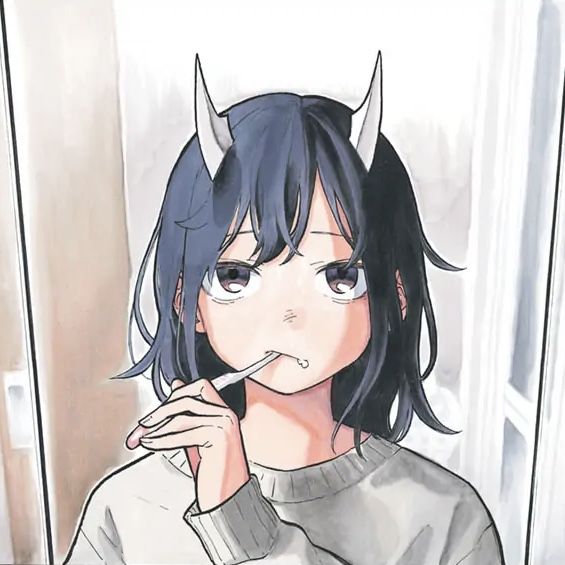



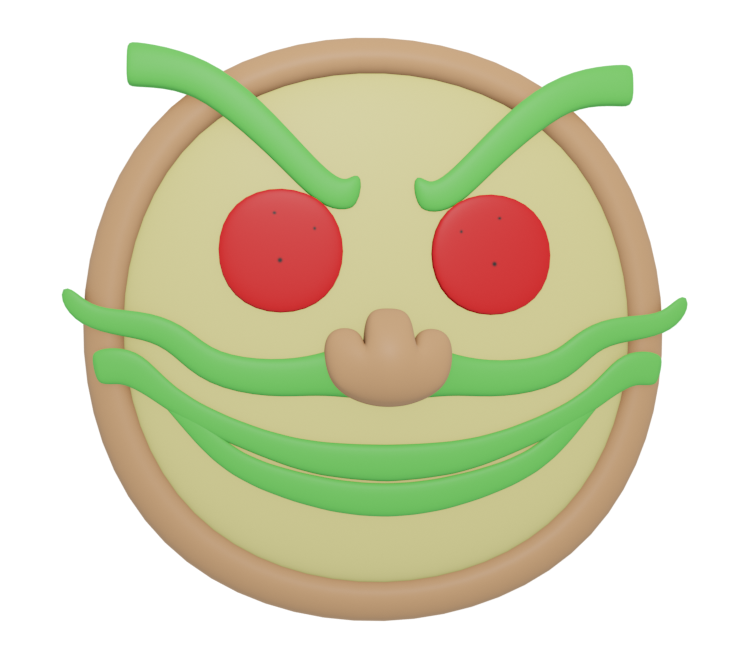
[sfx]
A remix of the theme in Super Mario Bros. (in Super Mario All Stars).
With "Bah"s
Without "Bah"s
A remix I made in a few hours.
Credit @bikibird for bell noise
Credit @tesselode for trumpet noise
Credit @Czarlo for helping with sprites (and making the "Bah" PCM sample using @rnd's ASCII tool)

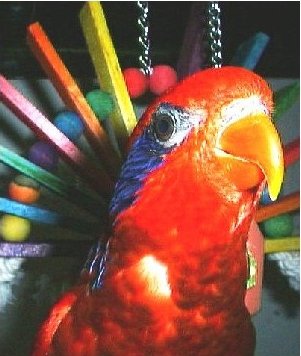
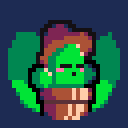







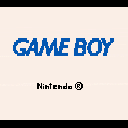
 0 comments
0 comments
